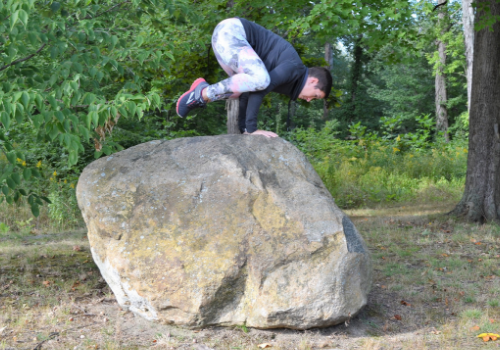I know, who wants to talk about leakage, right? But, who can relate? How many of you have to assume "the position” in order to sneeze, cough, laugh, etc. without a little leakage?
I’m a personal trainer in Erie, Pa., who works solely with women. I also recently earned my certification in pre/post-natal coaching. This work has shown me how common leakage is, not just with women who have birthed children, but women who have not. In fact, if you are raising girls who participate in high impact sports like gymnastics, cheerleading, and track and field, there is a good chance they experience leakage and are too embarrassed to tell anyone.
(Here’s a fact for you: 80 percent of all gymnasts who practice on the trampoline experience problems with leakage. Have you ever addressed this with your girls? It might be time to start!)
Most of us do Kegels wrong
It turns out most of us are doing Kegels wrong. If your pregnancy experience was similar to mine, the topic of Kegels was addressed in just one of the many visits and went something like this:
“You need to start doing Kegels. Throughout the day, tighten all of the muscles around your female anatomy, hold for 10-15 seconds and release.”
That was it.
Sound familiar? That was the only time it was mentioned. That's not a lot of time or education on an exercise that can be extremely important to women.
Plus it turns out that my doctor hadn't even shared the proper way to even do a Kegel! I was mind-blown when I learned the proper technique.
How to do Kegels correctly
Here is a crash course on doing Kegels correctly:
- Create a tall upper body.
- Allow for a gentle arch in the lower back.
- Stack your rib cage directly over the pelvis.
- Put one hand on your abdomen and the other on your rib cage.
- On the inhale breath, breathe into your hands and think about inflating your pelvic floor with air and relaxing the internal muscles of your pelvis.
- On the exhale, think about the “balloon” deflating and imagine the pelvic floor moving upward and contract those muscles.
It's important to relax the muscles on the inhale and contract them on the exhale. This will help your body learn to pull those muscles in tight on exertion -- which will mean no more leakage!
Work your way up to doing a set of 10 Kegels two or three times a day.
If you continue to have ongoing issues with leakage, talk to your doctor. Pelvic physical therapists are trained to work with women who have leakage due to pelvic floor issues.
 | Erica Hinsdale is a personal trainer and the owner of Fit Chicks Studio, a women-only fitness and wellness studio in Erie, Pa. |
🌸🌸🌸
More Macaroni Kid content we think you'll like: | ||||
Spring Walking Giveaway: Enter to win! | Recipe ideas from Macaroni Kid EATS! | Why moms should find time to exercise | ||






